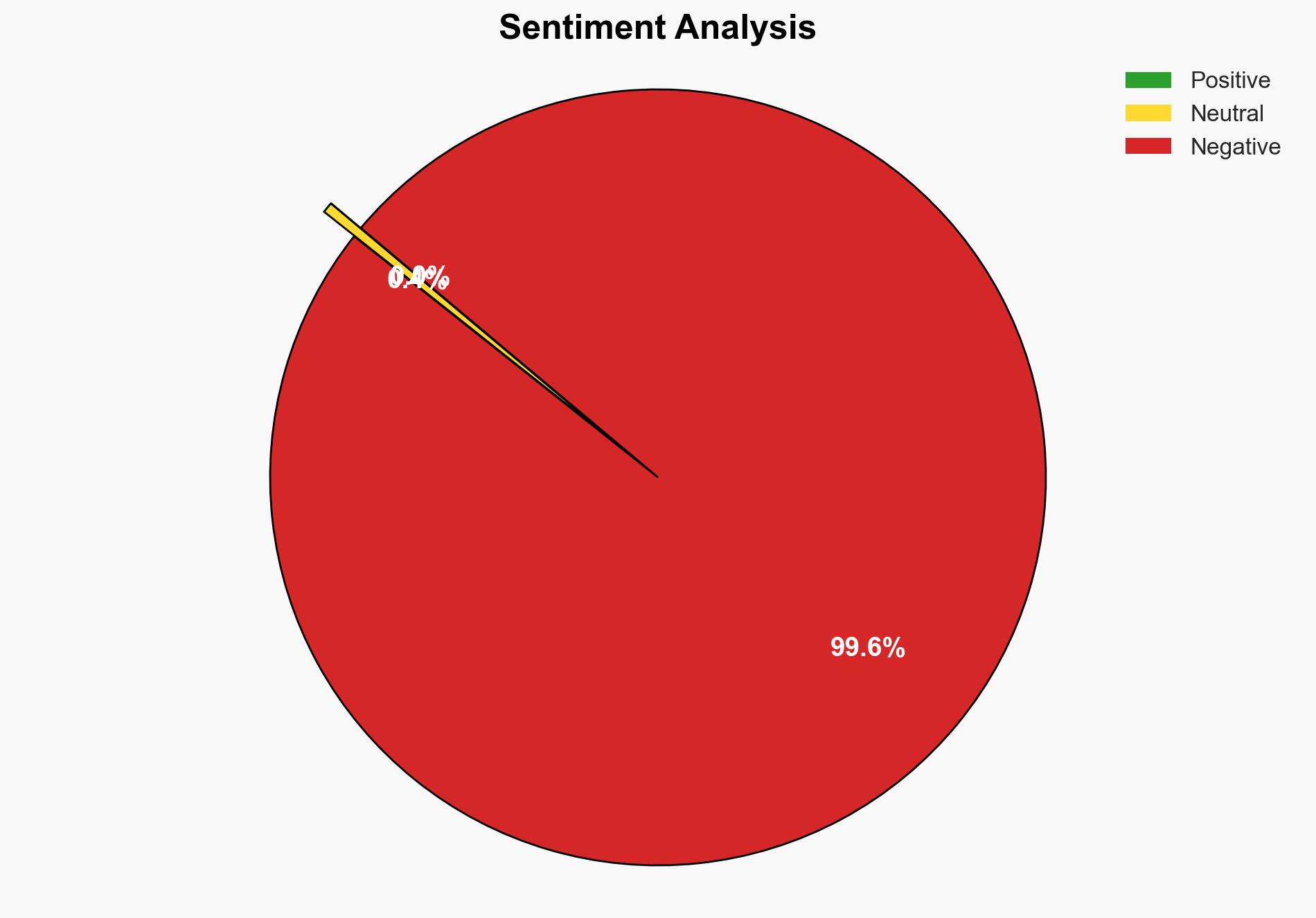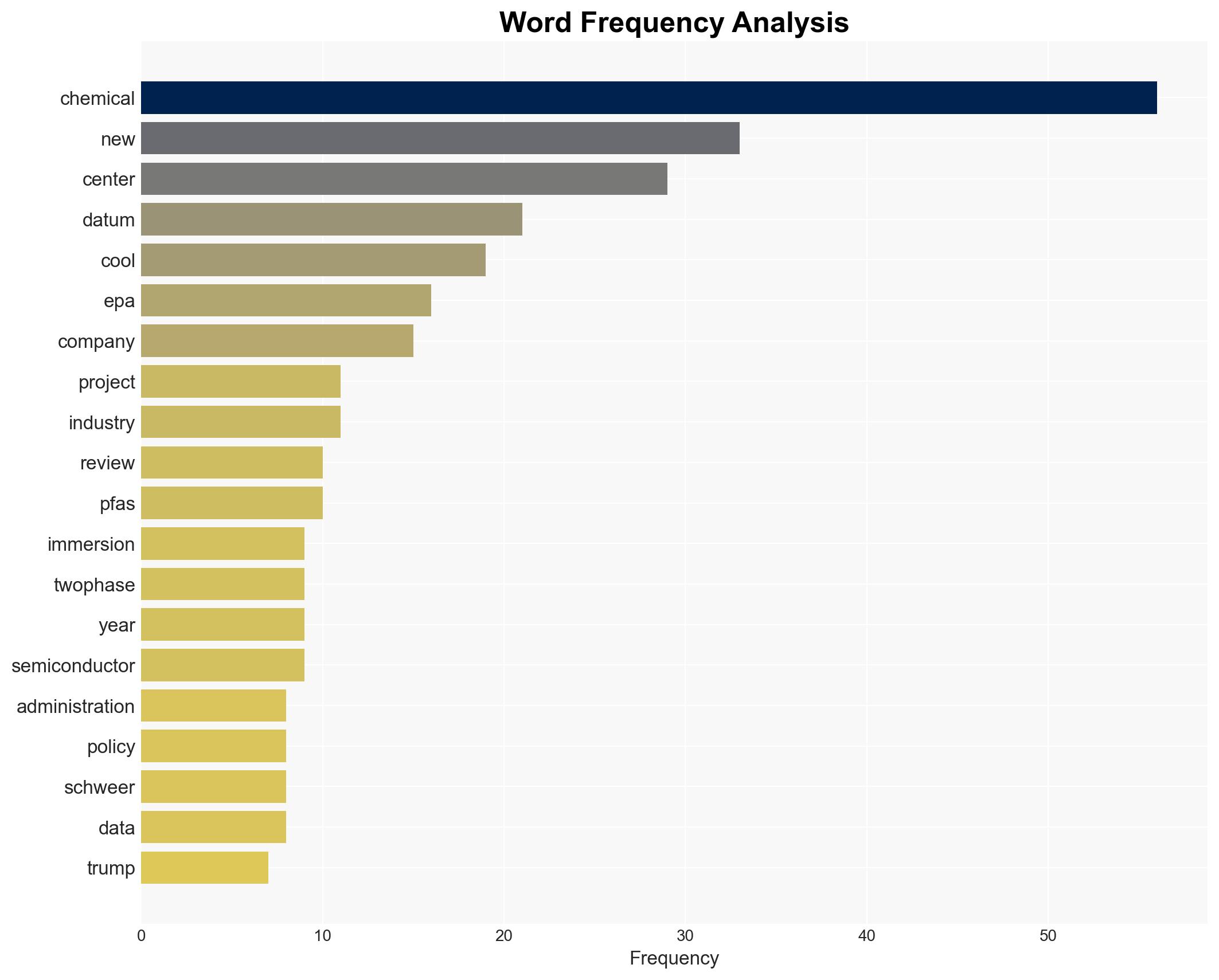Trump Administration’s Deregulatory Moves May Accelerate Approval of Controversial Chemicals
Published on: 2025-11-26
AI-powered OSINT brief from verified open sources. Automated NLP signal extraction with human verification. See our Methodology and Why WorldWideWatchers.
Intelligence Report:
1. BLUF (Bottom Line Up Front)
The Trump Administration’s deregulatory push for data centers, involving the rollback of chemical regulations, could lead to increased approval of potentially hazardous chemicals with insufficient oversight. This poses a moderate risk to public health and environmental safety. The most supported hypothesis is that the deregulatory measures will expedite chemical approvals, potentially compromising safety standards. Recommended action includes advocating for stringent oversight mechanisms and transparency in the chemical approval process.
2. Competing Hypotheses
Hypothesis 1: The deregulatory initiatives will expedite the approval of new chemicals, potentially leading to the introduction of hazardous substances with inadequate oversight.
Hypothesis 2: The deregulatory measures will streamline the chemical approval process without compromising safety, fostering innovation and economic growth in the data center and AI sectors.
Hypothesis 1 is more likely due to historical precedence of deregulatory actions leading to oversight lapses and the expressed concerns of experts about potential loopholes and political pressures influencing chemical approvals.
3. Key Assumptions and Red Flags
Assumptions: The EPA’s expedited review process will maintain scientific integrity. Deregulatory actions are driven by economic and technological growth objectives.
Red Flags: Political pressure on chemical approvals, bypassing of standard review processes, and potential conflicts of interest involving industry stakeholders.
Deception Indicators: Public statements emphasizing safety without substantive evidence of maintained oversight standards.
4. Implications and Strategic Risks
The primary risk is the introduction of hazardous chemicals into the environment, potentially leading to public health crises and environmental degradation. Politically, this could result in backlash against the administration and regulatory bodies, undermining public trust. Economically, while short-term growth may be achieved, long-term costs related to health and environmental remediation could outweigh benefits.
5. Recommendations and Outlook
- Implement independent oversight committees to review expedited chemical approvals.
- Enhance transparency by publicly disclosing chemical review processes and criteria.
- Engage with scientific and environmental experts to assess potential risks of new chemicals.
- Best-case scenario: Streamlined processes lead to safe innovation and economic growth.
- Worst-case scenario: Deregulation results in significant health and environmental crises.
- Most-likely scenario: Some hazardous chemicals are approved, leading to moderate public health and environmental issues.
6. Key Individuals and Entities
Greg Schweer, former EPA Chief of New Chemical Management Branch; Lee Zeldin, EPA Administrator; Brigit Hirsch, EPA Press Secretary.
7. Thematic Tags
Structured Analytic Techniques Applied
- Cognitive Bias Stress Test: Expose and correct potential biases in assessments through red-teaming and structured challenge.
- Bayesian Scenario Modeling: Use probabilistic forecasting for conflict trajectories or escalation likelihood.
- Network Influence Mapping: Map relationships between state and non-state actors for impact estimation.
Explore more:
National Security Threats Briefs ·
Daily Summary ·
Support us





